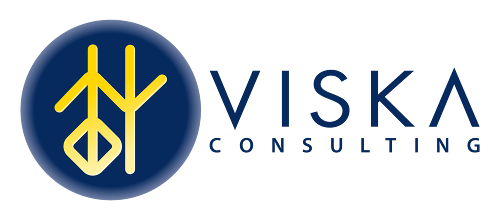Effective communication stands at the heart of every successful small business. It’s a critical factor that surfaces almost invariably in team assessments, pointing towards a prevalent challenge across various industries. Poor communication can cascade into a plethora of workplace issues, ranging from minor misunderstandings to substantial drops in productivity and employee morale. This comprehensive guide aims to delve into nuanced strategies, enhancing communication within small businesses to foster a more engaged, informed, and productive workforce.
Understanding the Impact of Effective Communication
Acknowledging the profound impact of communication on your business is crucial. It’s about conveying messages and building the foundation for all your operations.
- Identifying Communication Barriers: It’s essential to start by recognizing the barriers that hinder effective communication. These could be structural, such as the layout of your office, or more abstract, like cultural differences or gaps in understanding. A thorough assessment of these barriers is critical in developing a targeted approach to improve communication.
- Consequences on Operations and Morale: Poor communication can have far-reaching effects beyond mere operational inefficiencies. It can lead to errors, confusion, and a significant decline in staff morale. When employees aren’t clear on their roles or the business’s direction, a sense of disconnection and disengagement can pervade the workplace, impacting productivity and overall job satisfaction.
Establishing Effective Communication Channels
Developing and maintaining robust communication channels are vital for ensuring smooth information flow and understanding within the organization.
- Choosing Appropriate Communication Tools: The right communication tools are key to facilitating clear and effective interactions. This involves identifying which platforms (such as emails, instant messaging, or specialized project management software) align best with your team’s workflow and needs. The goal is to make communication as seamless and efficient as possible.
- Setting Guidelines for Communication: Establishing clear guidelines on the use of these communication tools can help avoid misunderstandings and information overload. This step involves defining what messages are appropriate for different channels and setting expectations for response times, ensuring that the communication process is efficient and respectful of everyone’s time.
Cultivating an Open Communication Culture
Creating a culture where open communication is valued and promoted is fundamental in building a collaborative and transparent work environment.
- Encouraging Open Dialogue and Transparency: Encouraging a culture of open dialogue and transparency is critical. It involves nurturing a workplace where employees feel comfortable and valued in sharing their ideas and concerns. This openness not only fosters trust but also encourages diverse perspectives and innovation.
- Implementing Regular Check-ins and Updates: Consistency in communication is key. Regular team meetings and one-on-one sessions are essential in maintaining open lines of communication. These meetings serve as a platform for employees to share updates, address issues, and align with the company’s goals. They also provide managers an opportunity to offer feedback and recognize employee contributions, fostering a culture of appreciation and continuous improvement.
Investing in Communication Training and Development
Critical to any thriving business environment, communication skills can and should be cultivated and refined.
- Comprehensive Communication Skills Training: Providing comprehensive training in communication skills is an investment in your team’s efficiency and cohesion. These training programs should encompass a range of skills, from active listening to effective presentation, tailored to enhance interpersonal interactions and overall team dynamics.
- Leadership Communication Training: Equipping your leadership team with advanced communication skills is equally important. Leaders need to be adept at conveying information and inspiring and engaging their teams. Training in areas such as empathetic listening, clear messaging, and constructive feedback can significantly improve the overall communication culture within the organization.
Leveraging Technology for Streamlined Communication
In today’s technologically driven business environment, leveraging the right tools can significantly enhance communication effectiveness and inclusivity.
- Implementing Collaborative Tools: Embracing technology in the form of collaborative tools can greatly streamline communication and collaboration. Tools like shared calendars, project management apps, and real-time document collaboration platforms can help keep everyone on the same page, irrespective of their physical location.
- Remote Communication Solutions: Investing in reliable and efficient remote communication solutions is imperative for businesses with remote or hybrid work models. These tools are about maintaining connectivity and ensuring that remote team members feel fully integrated and part of the communication loop.
Establishing Feedback Mechanisms
Effective communication is a two-way process. Setting up mechanisms for feedback is essential for continuous improvement and alignment.
- Regular Surveys and Feedback Channels: Implementing regular surveys and feedback channels can provide invaluable insights into the effectiveness of your communication strategies. This feedback, whether gathered through surveys, suggestion boxes, or informal chats, is crucial for understanding employee perspectives and identifying areas for improvement.
- Responsive Action on Feedback: Actively responding to the feedback received is as important as gathering it. It demonstrates to employees that their opinions are valued, and that the organization is committed to making tangible improvements based on their input. This response improves communication, builds trust, and fosters a more engaged and committed workforce.
Conclusion
In the complex and fast-paced world of small business operations, mastering the art of communication is not just about disseminating information but about creating an environment of shared understanding, alignment, and collaboration. By comprehensively understanding the impact of communication, establishing effective channels, fostering an open culture, investing in training, leveraging technology, and setting up feedback mechanisms, businesses can transform communication from a potential obstacle to success. This proactive approach ensures that every team member is not just informed but engaged and invested in the company’s goals, paving the way for a more connected, productive, and thriving business environment.
Engage Your Employees with Great Communication
Struggling to identify obstacles to productivity and growth? Communication is often a key issue in our assessments, frequently cited as a reason for employees feeling excluded or under-informed. You’re in the right place. At VISKA, we specialize in helping businesses like yours achieve optimal performance. Reach out to us today and let’s discuss how we can take your productivity to new heights.

